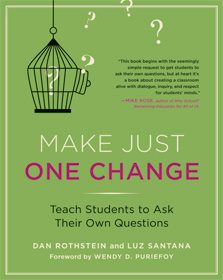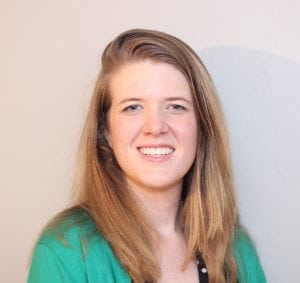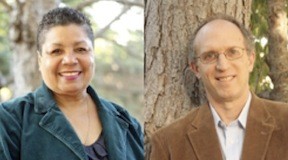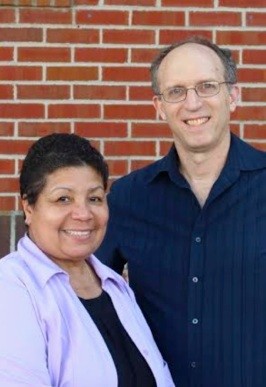by Shelby Clark
In the fall of 2015, my colleagues at Boston University and I set out to find out how the Question Formulation Technique (QFT) impacts high school student outcomes, in particular curiosity, divergent thinking (creativity), school engagement, and self-efficacy. On the one hand, we were particularly interested in knowing whether teaching students to ask their own questions is associated with gains in curiosity; our research suggests it is, but that’s not the question I’m here to discuss today.
Another one of our main questions was whether fidelity-of-implementation—how much teachers adhere to the steps of the Question Formulation Technique and how often they implement the QFT in their classrooms—has a role in bringing about positive youth outcomes. A powerful aspect of the QFT is that it can be adapted by teachers. Indeed, we know that we cannot expect educators to bring a new teaching technique into their classrooms without being able to adapt it to both their strengths as an educator as well as the needs of their school and students. Yet, how much educators should consider adapting the QFT is a question we wanted to begin to unpack.
 A bit about the study’s methods: Over the course of the school year we asked English/Language Arts (ELA) teachers at two traditional Northeastern high schools to begin using the QFT in the fall after completing a self-led teacher book club using RQI’s Make Just One Change. We then asked ELA teachers at two other Northeastern High schools to do the same in the spring. 2217 students in all participating classrooms for all four schools were surveyed three times across the course of the 2015-2016 school year on the study’s outcomes—curiosity, divergent thinking, school engagement, and self-efficacy. 42 teachers, as well, were surveyed at the same time points regarding their use of the QFT. We asked teachers to report on:
A bit about the study’s methods: Over the course of the school year we asked English/Language Arts (ELA) teachers at two traditional Northeastern high schools to begin using the QFT in the fall after completing a self-led teacher book club using RQI’s Make Just One Change. We then asked ELA teachers at two other Northeastern High schools to do the same in the spring. 2217 students in all participating classrooms for all four schools were surveyed three times across the course of the 2015-2016 school year on the study’s outcomes—curiosity, divergent thinking, school engagement, and self-efficacy. 42 teachers, as well, were surveyed at the same time points regarding their use of the QFT. We asked teachers to report on:
- how often they used all the steps of the QFT,
- how well they felt their students were developing their curiosity and other study outcomes
- and how often they used the QFT in their classrooms.
Teachers were asked to nominate lessons using the QFT that the researchers could observe in order to track if all aspects of the QFT were being implemented. In all, 31 lessons were observed.
What did we find?
Fidelity-of-implementation matters! Both adherence to the steps of the QFT (how often teachers reported using all of the steps) and dosage, how many times teachers used the QFT, were significantly related to students’ positive growth on many of the study’s outcomes. High fidelity was linked to higher growth in curiosity, cognitive engagement, emotional engagement, and self-regulatory efficacy (feeling as though you have the skills to successfully learn). Moreover, high dosage—completing the QFT a higher number of times over the course of the year—was associated with higher growth in divergent evaluation and ideation (i.e. both forms of creativity), cognitive engagement, emotional engagement, and self-regulatory efficacy. This is not to say that using the QFT just once or twice in the classroom is not beneficial for students; in fact, we found that overall the QFT has a positive impact on student curiosity regardless of fidelity-of-implementation. What it does imply is that consistently rigorous and regular use of the QFT does lead to greater growth in several positive outcomes for students.
Some examples serve to illuminate such findings. Teachers were adamant that the “no judgment” rule of the QFT was important for cultivating student growth. For example, one teacher stated, “Left to themselves, they became more willing to move beyond the obvious, to explore. The ‘no judging’ rule encouraged more divergent thinking.” Another teacher commented, “the fact that questions wouldn’t be judged helped their confidence.” Finally, one teacher summed up, noting “students felt comfortable asking questions without being judged.” Perhaps due to this belief regarding the importance of “no judgment,” student and teacher reminders regarding the “no judgment” rule was one of the most common themes seen within the classroom observations. If teachers adapt the QFT to a point where students are not reminded of the importance of “no judgment,” it is unclear if the same positive outcomes would result.
On the other hand, what happens when students’ curiosity is sparked through the QFT, but they’re left with nowhere to go to answer their questions? Our results suggest that engaging in reflection, talking about next steps, and providing space for students to explore and answer their curiosity questions is an important part of the QFT process. Over 50% of our sample reported that they only “sometimes” engaged in the reflection step of the QFT. Similarly, although the majority reported “sometimes” or “often” discussing the “next steps” with students, very few reported “very often.” Some scholars argue that if curiosity is left unsatisfied it can lead to disengagement with learning, suggesting that allowing students to explore and answer their questions through reflection and a clear roadmap of next steps may be particularly important for producing positive student outcomes.
Achieving high quality fidelity-of-implementation of any intervention without adaptation is not always easily achieved, wanted, or feasible. In fact, many scholars are beginning to speak of integrity-of-implementation over fidelity-of-implementation—what are the core elements of the intervention that have to be in place in order to achieve positive outcomes? The Right Question Institute has worked to identify such core steps of the QFT that can be facilitated in order to achieve positive outcomes. Likewise, our research suggests that implementing the QFT in the classroom with either high fidelity, high dosage, or both, will lead to positive outcomes for youth curiosity, divergent thinking, school engagement, and self-efficacy. Today’s students are poised to enter into a more and more complex, diverse, globalized knowledge economy where strengths such as curiosity, creativity, and self-efficacy are increasingly valued. Finding ways to implement core tenets of the QFT with rigor and regularity, while at the same time adapting the QFT to their own individual needs and classrooms, will allow educators to help foster students with the skills and strengths needed to meet today’s challenges.

Shelby Clark is a doctoral candidate in applied human development at Boston University where her research focuses on the development of intellectual character strengths, such as curiosity, in adolescents and young adults. She formerly worked as a school counselor in St. Paul, Minnesota, where she became interested in the power of curiosity and questions for fostering school success and engagement for all students. Over the past two years she has been engaged in a study of the QFT on student curiosity and related outcomes across four Northeastern high schools. She can be contacted at sclark2@bu.edu.




That’s a really interesting study you made. Maintaining fidelity the the QFT is key because keeping to the way a program is designed will give the best results. It’s the same with agile services. If you follow the structure of the way it was designed, it will yield great results. Individual needs of course need to be kept in mind in the classroom.